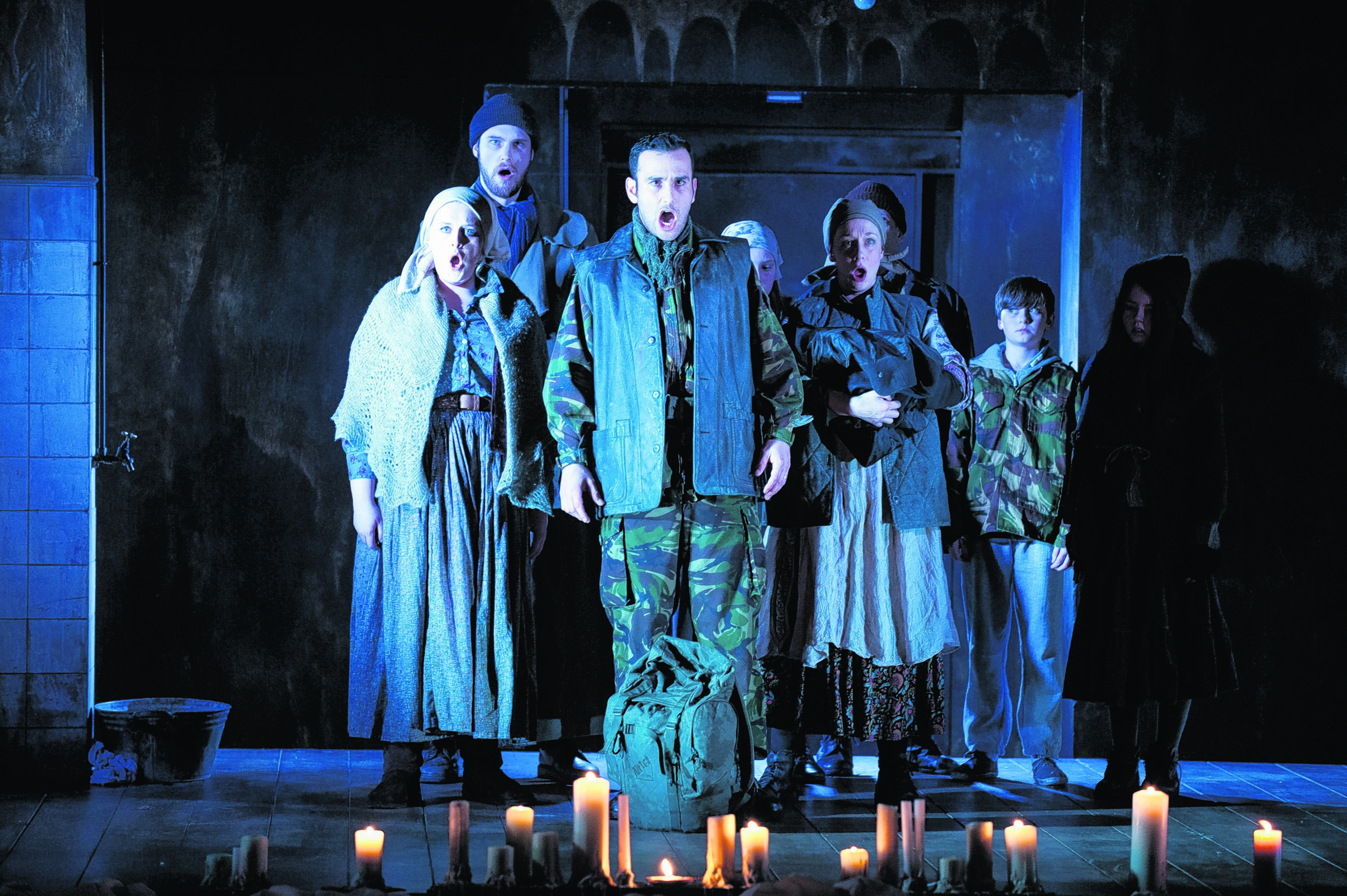Scottish Opera is bringing Verdi’s Macbeth to audiences across Scotland this autumn
This revival of Dominic Hill’s 2005 production stays true to the Shakespearean tale of betrayal, murder and power. The opera chronicles the fatal downfall of Macbeth – urged on by his wife to realise the prophecy of a trio of witches and claim Scotland’s throne.
Hill’s operatic production is inspired by the war-ravaged Balkans of the late 20th century. Macbeth was performed to sold-out shows at Glasgow’s Citizens Theatre and at Edinburgh’s King’s Theatre earlier this year.
Hill and designer Tom Piper have created a dystopia of camouflage-clad leaders and chain-smoking witches to tell the story of civil war and a lust for power.
Scottish Opera staff have delivered workshops for young people across 15 different locations, leading exercises and role-play based around the production. Following these sessions, six children from each workshop have been selected to play parts in the production when it is performed in their local venue.
Director Dominic Hill said: “We wanted to find a contemporary world that could carry the action of Macbeth with civil war and a struggle for power, but which still has a strong religious undercurrent to it.
“To convey that idea, we’ve taken inspiration from the Balkans conflict of the late 1990s, and of course audiences will recognise the same tragic themes from modern religious conflicts that we still see on the news today.
“But it’s important to say that this isn’t a hi-tech, high-testosterone take on Macbeth – it’s true that the production is influenced by images of the Balkans Conflict, but it also takes inspiration from Russian religious icons and painting.
“The libretto is largely lifted from Shakespeare’s writing, but we’ve tried to ensure that the action on stage will be something that today’s audiences can engage with.”
Scottish Opera’s director of education, Jane Davidson, said: “Although it’s great to be able to invite six children to actually play parts in the performances, our main aim is really that each and every one of the workshop participants will get something positive out of it.”
“It’s important to give young people in Scotland the chance to gain new insight into things that not everyone comes across at a young age, like opera.”
Leading the cast is David Stephenson, who returns to the role after being praised as “convincing and compelling” in the spring performances.
This piano-accompanied production also features former Scottish Opera Emerging Artists Shuna Scott Sendall and Marie Claire Breen.
One of this year’s Emerging Artists, Laura Margaret Smith, sings the part of one of the three witches. Kally Lloyd-Jones (Dance Derby, The Seven Deadly Sins) is the Revival Director for these performances.
Scottish Opera’s production of Verdi’s Macbeth will be performed throughout Scotland this autumn, including at the Garrison Theatre, Lerwick on Wednesday, October 1; Haddo House, Ellon on Saturday, October 4; Thurso High School on Tuesday, October 7; Eden Court, Inverness, on Thursday, October 9; The Corran Halls, Oban, on Saturday, October 11; Macphail Theatre, Ullapool, on Saturday, October 18; An Lanntair, Stornoway, on Tuesday, October 21; and Aros Centre, Portree, on Thursday, October 23. For further information, listings and ticket information, visit www.scottishopera.org.uk
